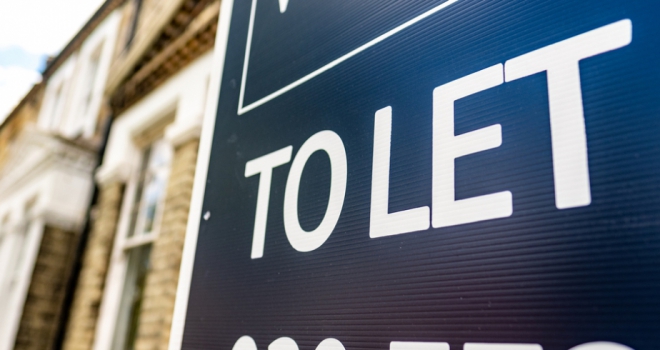
"This market imbalance has been one of the key factors that have caused rents to spiral beyond the realms of affordability and it’s a clear indictment of multiple cabinets that this issue has continued to worsen"
- Sam Reynolds - Zero Deposit
As the rental market braces to once again feel the cold shoulder where Budget related housing initiatives are concerned, new research by Zero Deposit has revealed the consequence of a homebuyer focussed Government, as privately rented homes as a proportion of all dwellings have fallen to their lowest percentage in a decade.
Zero Deposit analysed Gov data on dwellings stock levels, looking at the level of privately rented properties available to tenants across the rental market in England and what proportion of total dwellings these homes accounted for, as well as how this level of supply has changed over the years.
PRS stock has been increasing
The latest figures show that there are an estimated 4.9m privately rented homes found across England’s rental market. The good news is that this figure has been largely increasing over the years, up from 4.5m homes a decade ago (2013) and considerably higher than the £2.5m available in 2003.
However, for many years, the nation’s tenants have been playing second fiddle to homeowners, with the Government launching initiative after initiative aimed at fuelling homebuyer demand, while largely ignoring private rental sector supply, causing the cost of renting to spiral to dizzying heights.
Rents on the up
In fact, previous research by Zero Deposit found that the average tenant across England is now paying £994 per month in rent, a cost that has climbed by 5% in the last year alone, 37% over the last decade, and is expected to increase by a further 16% by 2030.
The latest figures from Zero Deposit highlight the long-term issue caused by the Government’s obsession with homeownership.
Homeowner supply overtaking PRS stock supply
In the last five years, the number of PRS dwellings found across England has crept up by just 2.4%. During the same period, the number of owner-occupied dwellings has climbed by more than double that, up 5%.
In the last year alone, PRS stock levels have increased by just 0.2% versus a 1.3% jump in owner-occupied dwellings.
PRS stock now accounts for the lowest proportion of all dwellings in a decade
As a result, privately rented properties now account for just 19.4% of all homes across England, the lowest proportion seen since 2013 when they accounted for 19.2% of the total market. What’s more, this proportion has largely been in decline since a peak of 20.3% in 2016.
A regional analysis conducted by Zero Deposit shows that tenants in some regions are worse off than others.
In fact, across both Yorkshire and the Humber (18.6%) and the South West (18.1%), the number of PRS homes as a proportion of all housing stock is currently at its lowest levels since 2011, while in the East of England (17.1%) and the North West (17%) its at its lowest since 2012.
In fact, just two regions have seen the level of PRS stock available as a proportion of all housing climb steadily over the years - London and the North East.
In the North East, privately rented homes now account for 17.8% of all dwellings, the highest percentage seen in the last 20 years.
At 29.5% of total stock, London is home to the highest proportion of privately rented properties of all regions and has seen this percentage climb consistently over the years. However, unlike the North East which is home to the nation’s most affordable cost of renting, London is home to the highest average rent in England.
Sam Reynolds, CEO of Zero Deposit commented: “We may have seen a consistent increase in the volume of privately rented homes reaching the market over the last two decades, but today’s market is dominated by a chronic undersupply of rental properties despite an overwhelming level of tenant demand.
"This market imbalance has been one of the key factors that have caused rents to spiral beyond the realms of affordability and it’s a clear indictment of multiple cabinets that this issue has continued to worsen.
"Over the last five years, in particular, the supply of owner-occupied homes has increased at a far greater rate than privately rented properties and renters will be forgiven for thinking that the Government is more focussed on homeowners than the real issues facing tenants today.
"The sad reality is that we expect it will be more of the same in today's Budget, as we prepare for yet more ill-advised initiatives aimed at short-term benefits to win votes as we approach an election, rather than address the root causes for those struggling within the rental market who continue to be left out in the cold.”





